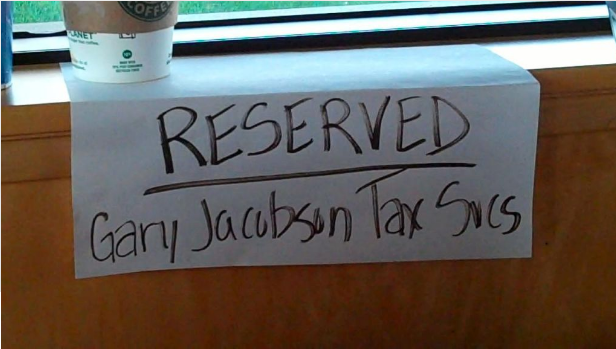In the Los Angeles Unified School District, the approach to special education is two-fold: Provide support and services and mix disabled children with the rest of the students. Cathy Harvey is a single mom who’s banking the system will help prepare her three special-needs sons for life in the real world. Patricia Nazario explains how.
Three-times a year, Cathy Harvey attends mandatory meeting with teachers at Los Angeles Public Schools. This time around, she’s at Plainview Elementary School in Tujunga with her eldest son, Daniel and special-educations advocate, Lee Englander. The meeting is about her middle son, Dylan.
Speech class, special-ed physical education, a wheelchair: Federal law mandates that students with disabilities get whatever they need to bridge the gap between their learning deficiency and their education.
Daniel Harvey is 15-years-old. He has Spastic Cerebral Palsy.
Dylan is 11. He has high-functioning autism.
Dakota, 9, also has autism and attention deficit disorder.
Los Angeles Unified School district paid for Daniel wheelchair. He also gets a personal aid in the classroom – neither service costs Cathy Harvey a dime. Dylan joins a small group at Plainview for weekly meetings with speech teacher Sonja Dunson. The fifth grader stutters, so he practices reading aloud.
“Pam looked up. ‘Oh dad,’” Dylan said slowly and clearly. “‘Please tell me a story.'”
“Very good!” exclaimed Sonja Dunson.
Dunson also has Dylan’s little brother, Dakota, in another group. The pint-sized third grader has a hard time pronouncing the “s” sound.
“Icicles,” says Dakota. “Groceries!”
“Ah, but, c’mon,” says Dunson. “Let’s get the teeth all the way down.”

Dylan Harvey speaks to his adaptive physical education teacher during class on the yard. (Photo by Patricia Nazario)
“Groceries-s-s-s-s-s,” exaggerated Dakota.
“OK,” says Dunson. “I’ll give you that one.”
Dakota Harvey also walks on his toes. His big brother, Dylan, has Asthma, can’t throw a ball very far, and has lower endurance than that of his fifth-grade classmates. Doctors have diagnosed both boys with the genetic disorder, Noonan Syndrome. They’re enrolled in adaptive physical education class at Plainview. Physical Education teacher Brian Grenham relays Dylan’s challenges to the boy’s mom, Cathy Harvey, at the student’s annual parent-teacher conference.
“Sometimes, he goes two laps and then I can see his face get red,” Grenham said about Dylan. “He says, ‘I need to rest.'”
At the mandatory meeting, The adults sit around a long table to review Dylan’s Independent Education Plan, or I.E.P. The electronic document defines every special-needs student in the L.A. Unified School district. It identifies a student’s present performance level and examines future goals. It also outlines additional services that the school board commits to cover. To navigate complicated laws and push for more services, Cathy Harvey hires special-education advocate, Lee Englander.
“Speech and language, occupational therapy, physical therapy, adapted P.E.” says Donnalyn Anton, special education supervisor for L.A. Unified. “So it’s at the district’s expense to go out, then, and contract, if that’s what the student needs.”
L.A. public schools, and districts around the country that receive federal funds, must provide services that comply with the Individuals with Disabilities Education Act, 2004.
“But, we don’t have a match funding,” said Anton.
She says there’s not enough money from Washington to meet L.A. County’s special education annual budget of $1.5 billion. So, L.A. Unified school administrators subsidize that expense, says Anton, from the district’s $6 billion general fund. The difference amounts to about $600-million a year.
“We’re fighting to get these services,” says Lee Englander. “The problem is, the district is trying to squeeze all of these things out of only a certain amount of money.”
Lee Englander knows Independent Education Plans and special education law inside and out. Parents, including Cathy Harvey, pay her to accompany them to those annual review meetings for their children. Englander has a reputation of nailing hard-to-get services.
“For example, if a child has behavioral issues and we feel it’s important for that child to be supported with an aid,” says Englander, “the district cannot say, ‘Oh, but that’s gonna cost us $25,000 a year.’ They cannot say, well, we can’t provide it, because we don’t have the money.”
Englander charges by the hour. Harvey first hired her four years ago and calls her back, each year, for every I.E.P. meeting for Daniel, Dylan and Dakota. L.A. Unified’s 2008 numbers show that schools are testing and enrolling fewer students into special-education programs. Appeals are up. Worried parents accuse public school officials of wrongfully denying services in an attempt to save money. Cathy says bringing Englander into the meetings avoids that stress.
“I used to get very emotional the night before an I.E.P. My stomach would hurt,” says Harvey. “I would have butterflies, because I just knew that what I wanted to fight for my child, that there was going to be a door slammed in front of me. I feel that if I did not have my advocate, my boys wouldn’t be getting what they need.”
WEB RESOURCES:
LAUSD Special Education
Fiesta Educativa
Her Three Sons: Part 1 – Home
Her Three Sons: Part 3 – Resources


